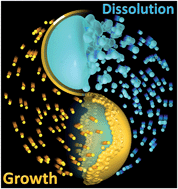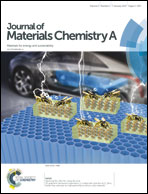Programmable synthesis of metal hydroxide/oxide hollow architectures: towards an efficient and robust photocatalyst for water remediation†
Abstract
A general, one-pot, “soft” SiO2-templating strategy has been developed for the synthesis of well-defined metal hydroxide/oxide hollow nanostructures (HNs) with programmable shells. The principle of this unique strategy lies in controlling the balance of the reaction kinetics between the deposition, growth and crystallization of the shells and the simultaneous etching of the SiO2 cores by the superhot water in the hydrothermal system. As a proof-of-concept study, hydroxy iron oxide (FeOOH) HNs with tunable architecture, shape and thickness of shells have been synthesized via this proposed “soft” SiO2-templating method. Then, several important metal oxide HNs such as α-Fe2O3, CeO2, SnO2 and TiO2 have been successfully synthesized by simply altering the metal precursor and/or reaction temperature, highlighting the excellent versatility and reliability of the proposed strategy. Further, this novel method can be readily extended to the fabrication of multi-shelled HNs with tunable chemical compositions. The as-synthesized FeOOH HNs with hierarchical and thicker shells exhibited excellent photocatalytic activity and outstanding stability for sustainable degradation of organic pollutants in water.


 Please wait while we load your content...
Please wait while we load your content...